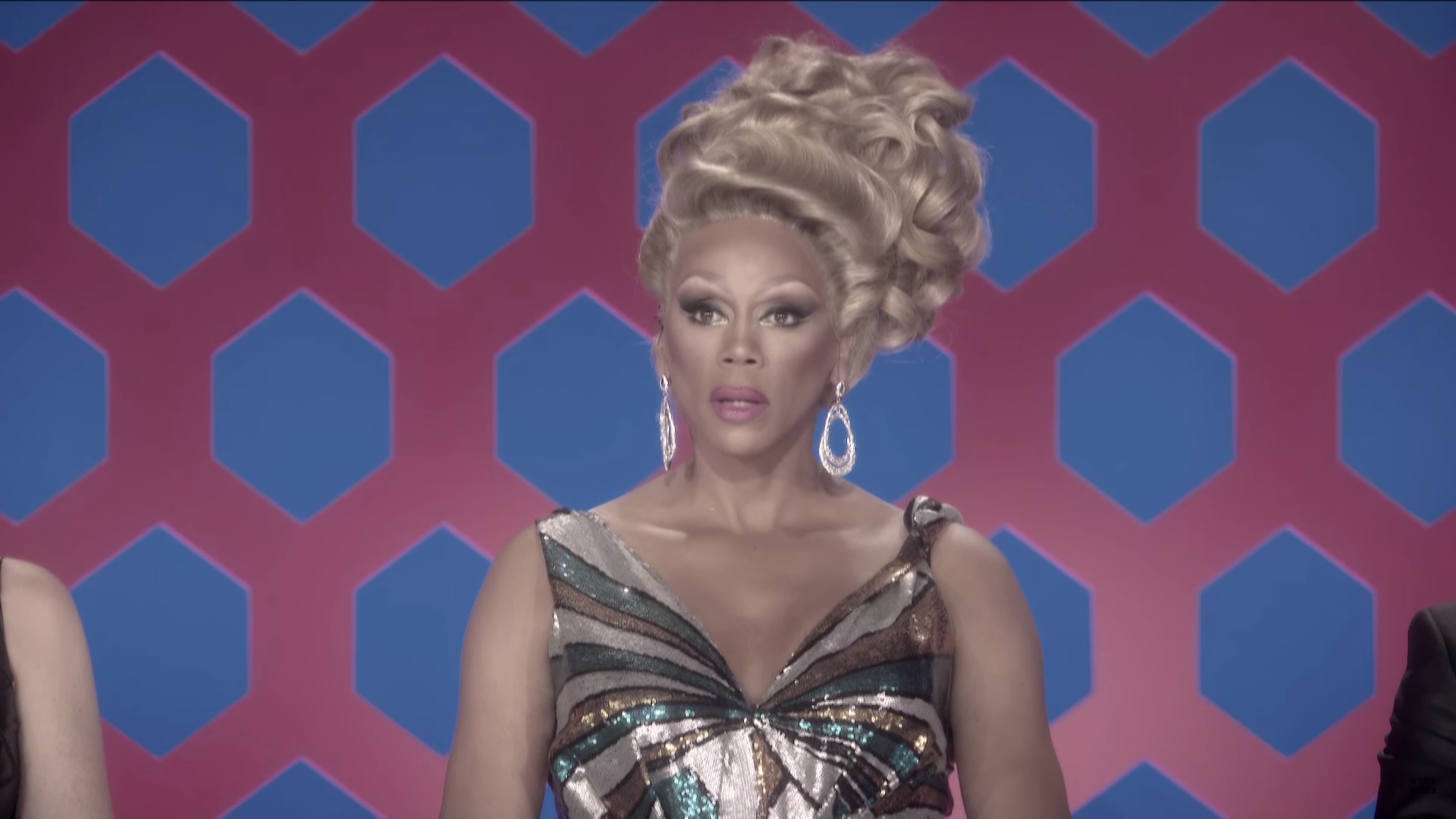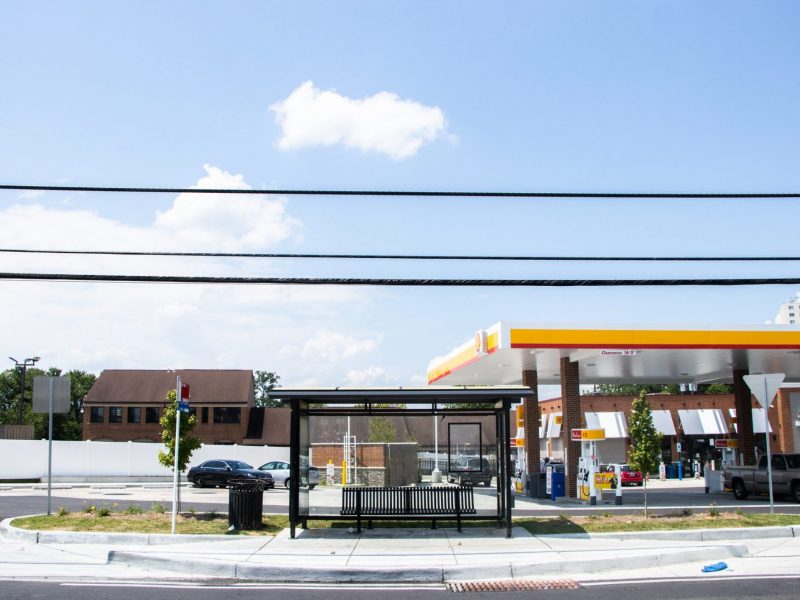Ever since RuPaul’s Drag Race premiered its opening season in February 2009, the drag queen competition has established itself as one of the most notable and longest-running LGBT-themed shows on television.
Led by the ageless RuPaul, a prominent drag queen since the 1990s, the show follows a group of queens — men dressed as women — who must perform in a weekly challenge and strut down the runway in their finest outfits. One contestant is eliminated each week based on their performance until only three queens remain, leaving RuPaul with the decision of who to crown as “America’s Next Drag Superstar” in the celeb-studded finale.
Now, the show finds itself embarking on its eighth season of outlandish yet extravagant costumes and makeup, fierce lip syncs to top-40 songs and not-so-subtle puns about male genitalia and gay sex. (Penny Tration, for example, is the name of a queen who briefly graced the screen for season five.)
For the most part, the show, which is really just an overly queer version of America’s Next Top Model, has been a boon to the LGBT community.
For starters, the program has catapulted a whole subset of gay culture directly into the bright spotlight of the mainstream, especially among younger viewers. Once relegated to the shadows for its controversial stance on gender expression, drag culture is now becoming one of the most vibrant and celebrated facets of the LGBT community.
And RuPaul’s Drag Race deserves credit not just for giving the art form a pedestal to stand upon, but for also allowing the whole breadth of drag queens to share their unique styles, no matter how off-putting they might be to viewers.
Season four winner Sharon Needles, with a name that just reeks of her grungy style, is a perfect example. Right off the bat, Needles never strayed from her style; her first runway look was a post-apocalyptic zombie with blood oozing out of her mouth and over her face. Later that season, as other queens wore fabulous gowns for a red carpet-inspired challenge, Needles, ever a rebel, pretended to give herself plastic surgery by injecting a needle into her lips.
Many of the show’s contestants felt Needles didn’t encapsulate the true spirit of drag — one even yelled, “Go back to Party City, where you belong!” — but in the end, RuPaul saw the potential in the feisty queen, exalting her as that season’s champion.
Similarly, the show has experimented with the “genderf—” style of drag, in which gender stereotypes are flipped on their head. Queens had to match their best outfit with fake facial hair for the beautifully named “ShakesQueer” challenge in season seven. That challenge aimed to stretch the gender binary, and the show now attempts to quash it entirely.
The show is also a benefit to the gay community because of the positive message it espouses. At the end of every episode, RuPaul departs with his inspiring message that “If you can’t love yourself, how in the hell are you gonna love somebody else?” Contestants on the show often talk about their daily struggles with self-acceptance, conflicts with family members over their career choice and even moments of abuse, which usually ends with moving advice from RuPaul or a fellow queen.
For troubled gay teens looking for a glimmer of hope, the show provides that and more. It gives them heroes to look up to, mantras to repeat (“You’re born naked, and the rest is drag”) and ample amounts of bravery to siphon into their own lives.
But that doesn’t mean the show, like everything, is without fault.
It definitely does little to negate the common tropes about gay men. The show’s “Pit Crew” — merely scantily clad eye candy with chiseled abs, tight underwear and massive bulges only called on for sex appeal — reinforce the already-unhealthy body-image issues many gay men struggle with today. There’s nothing wrong with a little bit of shirtless men here or there (I can’t say I don’t look…), but it definitely sends the wrong message on a show about embracing yourself, flaws and all.
Frequent catfights and overhyped drama often plagues RuPaul’s Drag Race as well, reinforcing the stereotype of gay men as catty gossips. Of course, this is to be expected with any reality TV show, but the program’s producers take the drama one step further. They edit in side-eyes and eye-rolls to paint some characters as the “good guys” and others as the “bad guys” — or girls, depending on their current state of dress.
Roxxxy Andrews, one of season five’s final three contestants, found herself a victim of that suspect editing. It’s a commonly held belief that the show’s editors, in an attempt to dredge up support for the season’s eventual victor Jinkx Monsoon, used Andrews’ quotes and facial expressions out of context to smear her.
Andrews herself even mentioned this in a Facebook post the night after a particularly damning episode of her insulting Monsoon.
“Am i blaming editing? NO because i had to say those things at some point,” she wrote in a Facebook post. “BUT, they Can put it anywhere they want in the show. regardless of what episode i actually said it in.”
Still, at the end of the day, Monsoon and Andrews remain good friends, and both benefited from the enhanced spotlight on their careers. Ask any of the queens about the show’s pitfalls, and I’m sure they would gladly stomach the bad for all the good it brought.
The same can be said for Rupaul’s Drag Race‘s impact on the LGBT community. Sure, there are some problematic themes here or there, with another being the controversy surrounding RuPaul’s use of the word “tranny” or his since-discarded phrase “You got she-mail!” But those things pale in comparison to the tremendous job it has done in educating the populace about an integral part of the LGBT community.
So for all that, in the words of RuPaul as he saves one of the two queens up for elimination each week: “Shante, you stay,” RuPaul’s Drag Race, “shante, you stay.”



